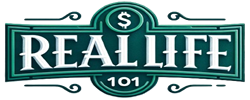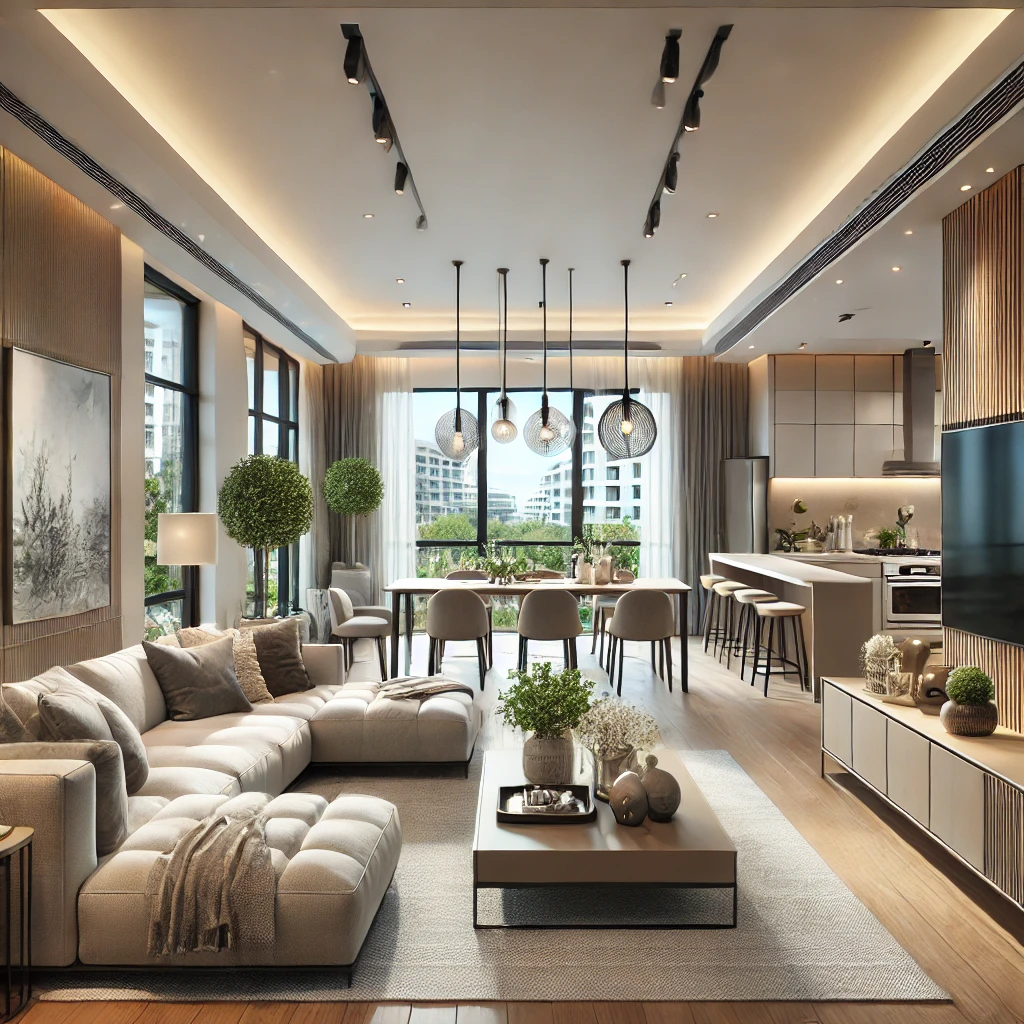Introduction
Increasing the value of a home is a crucial consideration for many homeowners, whether the goal is to sell at a higher price or to make a sound long-term investment. Home improvements and renovations can significantly boost market value, making the property more attractive to potential buyers. Addressing the primary question, “what adds more value to a home?” This article will explore the most effective strategies and upgrades to maximize return on investment, providing valuable insights for those looking to enhance their property’s worth.
Understanding Home Value
What Determines a Home's Value?
Several key factors determine a home’s value, influencing how much a property can sell for in the market. Location is one of the most significant determinants. Proximity to amenities such as schools, shopping centers, parks, and public transportation can greatly enhance a home’s appeal. Additionally, neighborhoods with low crime rates and high-quality services tend to see higher property values.
Market conditions also play a crucial role. A seller’s market, characterized by high demand and low inventory, can drive up prices, while a buyer’s market, with more properties available than interested buyers, can depress them. Economic factors, such as interest rates and local employment rates, also impact market conditions and, consequently, home values.
The condition of the property itself is another vital factor. Well-maintained homes with modern amenities, updated systems (like HVAC, plumbing, and electrical), and aesthetically pleasing interiors and exteriors generally command higher prices. Conversely, properties requiring significant repairs or outdated in style may sell for less.
Why Home Improvements Matter
Home improvements can significantly impact a property’s market value, making it more competitive and appealing to potential buyers. Renovations and upgrades address both functional and aesthetic aspects, enhancing the overall living experience and increasing desirability.
For instance, modernizing key areas such as kitchens and bathrooms can yield substantial returns on investment. These rooms are often focal points for buyers, and upgrades like new appliances, countertops, and fixtures can make a significant difference. Enhancing curb appeal through landscaping, exterior painting, and entryway upgrades creates a strong first impression, which can be pivotal in attracting buyers.
Energy efficiency improvements, such as installing energy-efficient windows or upgrading insulation, not only reduce utility costs but also appeal to environmentally conscious buyers. Similarly, adding living space by finishing a basement or attic can increase the usable square footage, making the home more attractive to larger families or those needing extra space.
Incorporating smart home technology and creating outdoor living spaces are other effective strategies. Modern, tech-savvy features and amenities like decks, patios, and outdoor kitchens cater to contemporary lifestyles, adding significant value.
Top Home Improvements That Add Value
Kitchen Remodels
Modernizing the kitchen is one of the most effective ways to add value to a home. A high return on investment (ROI) can be achieved through strategic upgrades that enhance both functionality and aesthetics.
Popular upgrades include new appliances, which not only improve efficiency but also give the kitchen a sleek, modern look. Stainless steel appliances, in particular, are highly sought after. Upgrading countertops to materials like granite or quartz provides a durable and stylish surface that can withstand daily use. Cabinets are another key area; replacing outdated cabinetry with custom or semi-custom options can dramatically transform the kitchen’s appearance. Adding features like soft-close hinges and pull-out shelves can further increase the kitchen’s appeal to potential buyers.
Bathroom Renovations
Bathrooms are another critical area where renovations can significantly boost a home’s value. Enhancing functionality and aesthetics in these spaces can make a substantial impact.
Cost-effective changes such as installing new fixtures, including faucets, showerheads, and lighting, can refresh the bathroom without breaking the bank. Updating tiling, whether on the floor or in the shower, can also give the space a modern feel. For a more extensive renovation, consider replacing the vanity with one that offers more storage and a contemporary design. Adding energy-efficient features like low-flow toilets and LED lighting can appeal to environmentally conscious buyers and reduce utility costs.
Curb Appeal Enhancements
The exterior of a home creates the first impression for potential buyers, making curb appeal enhancements a crucial investment. Simple improvements can make a significant difference in how a property is perceived.
Landscaping is one of the most impactful changes. Well-maintained lawns, trimmed hedges, and colorful flower beds can make the home more inviting. Exterior painting is another effective way to refresh the look of the house. Choosing a modern, neutral color palette can attract a wider range of buyers. Upgrading the entryway, such as installing a new front door or adding stylish lighting, can also enhance curb appeal. Features like a well-lit path or a charming porch can make the entrance more welcoming.
Implementing these top home improvements can greatly increase the market value of a property, making it more attractive to potential buyers and providing a solid return on investment.
Energy Efficiency Improvements
Installing Energy-Efficient Windows
Upgrading to energy-efficient windows is a powerful way to add value to a home. These windows reduce heat loss in the winter and keep the home cooler in the summer, leading to long-term savings on energy bills. Potential buyers are often attracted to homes with these features due to the promise of lower utility costs. Additionally, energy-efficient windows can improve the home’s overall comfort by reducing drafts and maintaining a consistent indoor temperature. By investing in double- or triple-pane windows with low-E coatings, homeowners can significantly enhance their property’s appeal and value.
Upgrading Insulation
Improving a home’s insulation is another effective strategy for increasing its value. Proper insulation reduces energy consumption by maintaining a stable indoor temperature, which can result in significant savings on heating and cooling costs. Homes with upgraded insulation are more comfortable and energy-efficient, which is a key selling point for many buyers. Popular areas for insulation upgrades include the attic, walls, and basement. Using materials like spray foam, fiberglass, or cellulose can provide excellent thermal performance and soundproofing benefits. By addressing insulation, homeowners can create a more energy-efficient living space that appeals to eco-conscious buyers and adds to the property’s overall value.
Solar Panels and Renewable Energy Solutions
Installing solar panels and other renewable energy solutions can greatly enhance a home’s value. Solar panels reduce reliance on traditional energy sources, lowering electricity bills and providing a sustainable energy solution. Homes equipped with solar panels are increasingly appealing to eco-conscious buyers who prioritize environmental responsibility and energy savings. Additionally, many regions offer tax incentives and rebates for installing solar panels, which can offset the initial investment cost. Other renewable energy solutions, such as geothermal heating and cooling systems or wind turbines, can further increase a home’s energy efficiency and attractiveness. By incorporating these green technologies, homeowners can significantly boost their property’s market value and appeal to a growing segment of environmentally-minded buyers.
Additional Value-Adding Upgrades
Adding Living Space
Expanding the usable living space in a home is one of the most impactful ways to increase its value.
Benefits of Finishing a Basement or Attic
Converting an unfinished basement or attic into a functional living area adds valuable square footage. A finished basement can serve as an extra bedroom, home office, entertainment room, or even a rental unit, offering flexibility to meet various needs. An attic conversion can provide a cozy and unique living space, often with the benefit of privacy. Both types of renovations typically yield a high return on investment, as they increase the home’s overall livable area and utility.
Building an Addition or Sunroom
Adding an extra room or a sunroom can also significantly boost a home’s value. An addition, whether it’s an extra bedroom, bathroom, or family room, enhances the home’s functionality and appeal. A sunroom can provide a bright, inviting space that bridges the indoors and outdoors, adding to the property’s charm. These expansions not only make the home more spacious but also cater to the desires of potential buyers looking for more versatile and comfortable living spaces.
Smart Home Technology
Incorporating smart home technology is increasingly becoming a key factor in adding value to a home. Modern, tech-savvy features enhance a home’s appeal by offering convenience, security, and energy efficiency.
Increasing Appeal with Modern, Tech-Savvy Features
Smart thermostats, lighting systems, and security cameras are popular upgrades that attract buyers. These devices can be controlled remotely via smartphones, providing convenience and peace of mind. Smart thermostats, for instance, can learn a homeowner’s schedule and adjust temperatures accordingly, leading to energy savings. Smart lighting systems can enhance security and ambiance, while smart security cameras and doorbells offer enhanced protection. Integrating these technologies can make a home more attractive to tech-savvy buyers and increase its market value.
Outdoor Living Spaces
Creating functional and attractive outdoor living spaces is another excellent way to add value to a home. Outdoor areas enhance the property’s appeal by extending the living space and providing areas for relaxation and entertainment.
Decks, Patios, and Outdoor Kitchens as Valuable Amenities
A well-designed deck or patio can serve as an ideal space for outdoor dining, entertaining, or simply enjoying the weather. Adding features like a fire pit, built-in seating, or an outdoor kitchen can further elevate the outdoor living experience. Outdoor kitchens, equipped with grills, sinks, and refrigerators, are particularly appealing to those who love to entertain. These additions create a seamless transition between indoor and outdoor living spaces, making the home more versatile and attractive. By investing in outdoor living areas, homeowners can significantly enhance their property’s appeal and value.
Cost-Benefit Analysis of Home Improvements
Budgeting for Renovations
Setting a realistic budget is crucial when planning home improvements to ensure that projects are financially feasible and provide a good return on investment.
Setting a Realistic Budget and Prioritizing Projects
Start by evaluating your financial situation and determining how much you can comfortably allocate for renovations. It’s essential to factor in not just the cost of materials and labor, but also a contingency fund for unexpected expenses. Research the average costs of desired upgrades and compare them with the potential increase in home value. Prioritize projects based on their impact on value and urgency. High-impact areas such as kitchens, bathrooms, and energy efficiency improvements should typically take precedence over less critical upgrades. Creating a detailed budget and sticking to it helps avoid overspending and ensures that the renovations contribute positively to the home’s overall value.
High ROI vs. Low ROI Improvements
Understanding the difference between high and low return on investment (ROI) improvements can help homeowners make informed decisions about where to allocate their renovation budgets.
Comparing the Return on Investment for Various Upgrades
High ROI improvements are those that offer significant value relative to their cost. For example, kitchen remodels and bathroom renovations often recoup a large portion of their costs when the home is sold. Energy-efficient upgrades, like installing new windows or adding insulation, also tend to offer high ROI due to their appeal to cost-conscious buyers and the long-term savings they provide.
On the other hand, low ROI improvements may not significantly enhance the home’s value relative to their expense. Projects such as luxury landscaping, high-end fixtures, or overly personalized decor might appeal to a niche market but won’t necessarily increase the home’s market value substantially. It’s essential to balance personal preferences with market trends and choose upgrades that will attract the widest range of potential buyers.
By carefully analyzing the cost and potential benefits of each home improvement project, homeowners can make strategic decisions that enhance their property’s value and ensure a solid return on investment.
Real-Life Examples of Value-Adding Home Improvements
Case Study 1: A Successful Kitchen Remodel
Before and After
In this case study, a 1980s-style kitchen underwent a complete transformation. The original kitchen featured outdated appliances, laminate countertops, and worn cabinetry. The homeowners decided to invest in a modern remodel to increase their home’s value and functionality.
Costs
The total cost of the kitchen remodel was $30,000. This included high-end stainless steel appliances ($10,000), quartz countertops ($5,000), custom cabinetry ($12,000), and new flooring and lighting ($3,000).
Value Increase
After the remodel, the home’s value increased by approximately $40,000, providing a significant return on investment. The updated kitchen not only enhanced the home’s aesthetic appeal but also made it more functional and attractive to potential buyers. The modern appliances and stylish finishes created a high-end look that significantly boosted the property’s market value.
Case Study 2: Enhancing Curb Appeal
Specific Projects
A suburban home with a lackluster exterior saw a dramatic increase in value after focused curb appeal enhancements. The original exterior was plain, with minimal landscaping and an outdated facade. The homeowners decided to invest in several key projects to improve the home’s first impression.
- Landscaping: The front yard was redesigned with new sod, flowering shrubs, and a variety of colorful plants. A stone pathway leading to the front door was added, along with landscape lighting to highlight key features.
- Exterior Painting: The home’s exterior was painted in a modern, neutral color palette, replacing the faded and peeling original paint.
- Entryway Upgrade: A new front door with decorative glass panels was installed, complemented by stylish outdoor lighting fixtures.
Impact on Home Value
The total cost of these projects was $15,000. Landscaping accounted for $5,000, exterior painting for $7,000, and the entryway upgrade for $3,000. Following these enhancements, the home’s value increased by $25,000. The fresh, attractive exterior drew more interest from potential buyers and created a welcoming first impression that significantly contributed to the home’s overall appeal and marketability.
These real-life examples demonstrate how targeted home improvements can substantially increase a property’s value, making it more appealing to potential buyers and providing homeowners with a solid return on their investment.
Tips for Maximizing Home Value
Researching the Local Market
Understanding the local market is essential for making informed decisions about home improvements.
Understanding What Buyers in Your Area Are Looking For
Start by researching recent sales in your neighborhood to identify trends and preferences among buyers. Look at homes similar to yours and see what features and upgrades they have. Pay attention to the most sought-after amenities, such as open floor plans, modern kitchens, or energy-efficient features. Local real estate websites and market reports can provide valuable insights into what buyers are currently looking for. This information will help you prioritize improvements that are likely to increase your home’s value and appeal to potential buyers.
Working with Professionals
Collaborating with experienced professionals can greatly enhance the quality and effectiveness of your home improvements.
The Benefits of Hiring Contractors and Real Estate Agents
Hiring reputable contractors ensures that renovations are completed to a high standard, which is crucial for maximizing home value. Professional contractors have the skills, tools, and experience to handle complex projects and deliver polished results. They can also provide valuable advice on the best materials and techniques to use, which can further enhance the quality of the work.
Real estate agents are another valuable resource. They have a deep understanding of the local market and can offer insights into which improvements will yield the highest return on investment. A good agent can also help you stage your home to highlight its best features, making it more attractive to buyers. Working with professionals can save you time, reduce stress, and ensure that your home improvements are both effective and profitable.
Planning for the Long Term
When considering home improvements, it’s important to think about future trends and sustainability.
Considering Future Trends and Sustainability
Investing in upgrades that are likely to remain desirable in the long term can help protect your investment. For example, energy-efficient features, such as solar panels and high-efficiency HVAC systems, are becoming increasingly popular as utility costs rise and environmental awareness grows. These features not only reduce your home’s operating costs but also make it more attractive to a growing segment of eco-conscious buyers.
Sustainable materials and practices are also worth considering. Using reclaimed wood, recycled materials, or low-VOC paints can appeal to environmentally-minded buyers. Additionally, incorporating smart home technology can future-proof your home by ensuring it meets the evolving needs of modern homeowners.
By researching the local market, working with professionals, and planning for the long term, you can make strategic improvements that maximize your home’s value and ensure it remains competitive in the real estate market.
Conclusion
Strategic home improvements play a vital role in enhancing property value and attracting potential buyers. Key areas such as kitchen remodels, bathroom renovations, energy efficiency upgrades, and curb appeal enhancements offer substantial returns on investment. Expanding living spaces, incorporating smart home technology, and creating appealing outdoor areas further increase a home’s marketability. By researching the local market, working with professionals, and planning for the long term, homeowners can make informed decisions that maximize their property’s worth. Evaluating your home and considering these value-adding changes can ensure a more appealing and competitive position in the real estate market.



